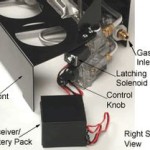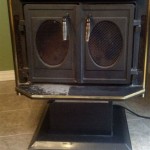What Paint To Use On Fireplace: A Comprehensive Guide
Selecting the appropriate paint for a fireplace is crucial for both aesthetic appeal and safety. Fireplaces are exposed to high temperatures, soot, and potential moisture, requiring a paint that can withstand these harsh conditions. Understanding the different types of paint and their properties is essential to making an informed decision and achieving a durable and visually pleasing finish.
This article will explore the characteristics of paints suitable for fireplaces, focusing on heat resistance, durability, and suitability for various fireplace materials. It will also address essential preparation steps and application techniques to ensure optimal results.
Understanding Heat Resistance in Fireplace Paint
Heat resistance is the primary consideration when choosing paint for a fireplace. Standard interior or exterior paints are not designed to withstand the temperatures generated by a working fireplace. When exposed to heat, these paints can blister, peel, crack, and emit potentially harmful fumes. Therefore, specialized paints formulated for high-temperature applications are necessary.
High-temperature paints typically contain pigments and resins that are designed to remain stable and adhere to the surface even when exposed to significant heat. These paints are often rated by their maximum temperature tolerance, typically ranging from 500°F to 1200°F or higher. Selecting a paint with a temperature rating that exceeds the expected surface temperature of the fireplace is crucial for long-term performance.
It's important to consider the location on the fireplace when determining the necessary heat resistance. The firebox itself, which directly contacts the flames, requires a paint with the highest temperature rating possible. The surrounding surfaces, such as the mantel or the facing, may experience lower temperatures, allowing for the use of paints with slightly lower heat resistance. However, err on the side of caution and choose a paint with a higher temperature rating than estimated to ensure adequate protection.
Furthermore, the type of fuel used in the fireplace can influence the surface temperature. Wood-burning fireplaces tend to generate higher temperatures than gas-burning fireplaces. Therefore, a wood-burning fireplace requires a paint with a higher heat resistance rating compared to a gas fireplace.
Manufacturers’ instructions should be carefully reviewed to confirm the paint's temperature rating and suitability for the intended application. Adhering to these guidelines will contribute to a safe and durable finish.
Exploring Different Types of Fireplace Paint
Several types of paint are suitable for fireplaces, each with its own advantages and disadvantages. These include high-temperature spray paints, masonry paints, and specialty paints designed for specific fireplace materials. The selection of the appropriate paint type depends on the fireplace material, the desired aesthetic, and the level of heat exposure.
High-Temperature Spray Paint: High-temperature spray paints are commonly used for painting the firebox and other areas directly exposed to flames. These paints are typically available in aerosol cans, making them easy to apply. They are formulated to withstand temperatures up to 1200°F or higher, providing excellent protection against heat damage. High-temperature spray paints are often used on metal surfaces, such as fireplace inserts and stove pipes. However, surface preparation is crucial for proper adhesion. The surface must be thoroughly cleaned, degreased, and possibly sanded to create a suitable bonding surface.
Masonry Paint: Masonry paint is designed for application on brick, stone, and concrete surfaces. It is formulated to be breathable, allowing moisture to escape from the masonry without damaging the paint film. This is particularly important for fireplaces, which can be exposed to moisture from condensation or leaks. Masonry paints are available in a variety of colors and finishes, providing numerous aesthetic options. However, not all masonry paints are heat-resistant. It is imperative to select a masonry paint specifically formulated for high-temperature applications if it will be used near the firebox. Latex masonry paints are generally more breathable than oil-based versions, making them a preferable choice for many masonry fireplaces.
Specialty Paints: Specialty paints are designed for specific fireplace materials, such as marble, tile, or cast iron. These paints often have unique properties that enhance adhesion, durability, and appearance on these surfaces. For example, some specialty paints are formulated to provide a textured finish that mimics the look of natural stone. Others are designed to resist staining and discoloration from soot and smoke. When painting a fireplace made of a material other than brick, stone, or metal, it is essential to consult with a paint specialist or the fireplace manufacturer to determine the appropriate type of paint.
The choice of paint finish also plays a role in the overall appearance and durability of the fireplace. Matte finishes tend to be more forgiving of imperfections, while gloss finishes are easier to clean. However, gloss finishes may also highlight surface irregularities. Satin finishes offer a balance between durability and aesthetic appeal, making them a popular choice for fireplaces.
Preparing the Fireplace for Painting
Proper preparation is essential for achieving a long-lasting and visually appealing paint job on a fireplace. Thoroughly cleaning, repairing, and priming the surface will enhance paint adhesion and prevent future problems. Neglecting these steps can result in peeling, cracking, and premature paint failure.
Cleaning the Fireplace: The first step in preparing the fireplace for painting is to thoroughly clean the surface. Remove any loose debris, soot, and dirt with a wire brush or a scraper. Use a vacuum cleaner to remove any remaining particles. If the fireplace is heavily soiled, wash it with a solution of trisodium phosphate (TSP) and water. TSP is a strong cleaner that effectively removes grease, soot, and other contaminants. Rinse the surface thoroughly with clean water and allow it to dry completely before proceeding.
Repairing Cracks and Damage: Inspect the fireplace for any cracks, chips, or other damage. Repair these imperfections with a masonry patching compound or a high-temperature mortar. Follow the manufacturer's instructions for mixing and applying the patching compound. Allow the patch to dry completely before sanding it smooth. This will create a level surface for the paint to adhere to.
Priming the Fireplace: Priming the fireplace is crucial for achieving optimal paint adhesion. A primer creates a uniform surface that the paint can bond to, preventing it from peeling or flaking. Use a primer specifically designed for masonry or high-temperature applications. Apply the primer evenly with a brush or roller, following the manufacturer's instructions. Allow the primer to dry completely before applying the paint. In some cases, two coats of primer may be necessary to achieve adequate coverage.
Masking and Protecting Surfaces: Before beginning to paint, protect surrounding surfaces from overspray and drips. Use painter's tape to mask off areas that you do not want to paint, such as the mantel, the surrounding walls, and the hearth. Cover the floor with drop cloths to protect it from paint spills. Proper masking and protection will save time and effort in the long run by preventing the need to clean up unwanted paint marks.
Finally, ensure adequate ventilation when painting the fireplace. Open windows and doors to allow fresh air to circulate. Use a respirator or mask to protect yourself from inhaling paint fumes. Safety precautions are essential to maintaining a healthy and safe working environment.
By following these preparation steps meticulously, you can create a solid foundation for a successful and long-lasting paint job on your fireplace. This will not only enhance the aesthetic appeal of your fireplace but also protect it from the damaging effects of heat and moisture.

How To Paint A Fireplace Interior Design Diy Tips Direct Fireplaces

How To Paint A Brick Fireplace What Use Home With Janny

How To Paint A Brick Fireplace Beamin Moore

How To Paint A Brick Fireplace Picking The Best For Your Paintzen

How To Paint The Inside Of A Fireplace Simple Upgrade Maria Louise Design

How To Paint A Brick Fireplace And The Best Use Craftivity Designs

Painting A Stone Fireplace Guide How To Paint

How To Paint A Wood Fireplace Surround Dainty Dress Diaries

How To Paint A Fireplace Interior Design Diy Tips Direct Fireplaces

A Fireplace Surround Transformation Guide Inspired By My Smurf Blue Makeover Architectural Digest








